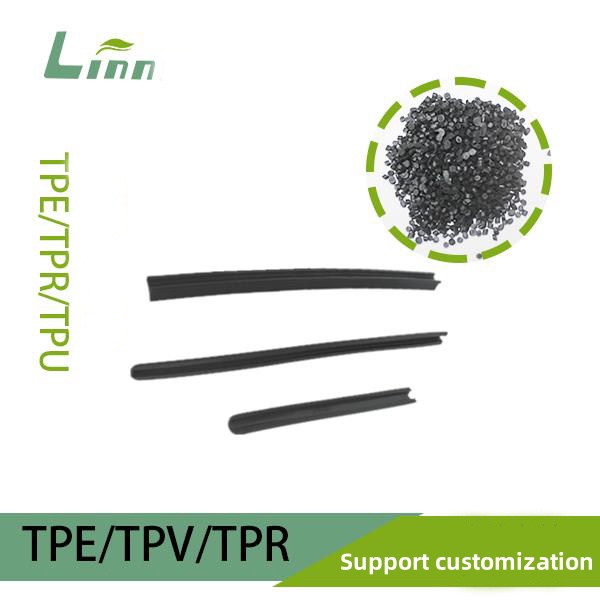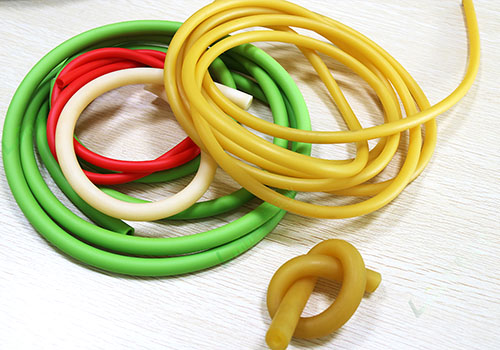As someone who’s spent over a decade tinkering with thermoplastic elastomers (TPEs) and polymer blends in industries ranging from automotive to consumer goods, I’ve encountered this question countless times: “Can TPR and POE be mixed, and if so, how?”
This isn’t just a theoretical query—it’s a practical challenge faced by engineers trying to balance cost, performance, and processability. Whether you’re developing a flexible grip for a power tool, a shock-absorbing component for footwear, or a soft-touch coating for electronics, understanding the interplay between TPR (Thermoplastic Rubber) and POE (Polyolefin Elastomer) could unlock new possibilities—or lead to costly mistakes.
In this guide, I’ll share my hands-on experience, real-world case studies, and actionable insights to help you decide whether blending TPR and POE makes sense for your project. I’ll use bold text to highlight key points, tables to summarize critical data, and a Q&A section at the end to address common doubts. Let’s get started.

I. Understanding TPR and POE: The Basics
Before diving into mixing, let’s clarify what TPR and POE are—and why they’re often compared.
1. What Is TPR?
TPR is a broad term for thermoplastic rubber, a class of copolymers or physical blends that mimic the properties of vulcanized rubber but can be processed like thermoplastics. Common types include:
SBS (Styrene-Butadiene-Styrene): Used in shoe soles, handles, and toys.
SEBS (Styrene-Ethylene-Butylene-Styrene): More heat-resistant and UV-stable than SBS, used in automotive parts and medical devices.
TPV (Thermoplastic Vulcanizates): A dynamic vulcanization blend of rubber and polypropylene, offering superior oil resistance.
Key Traits:
Soft, flexible, and elastic.
Recyclable and reprocessable.
Vulnerable to UV degradation (unless modified).
2. What Is POE?
POE is a metallocene-catalyzed polyolefin elastomer, typically a copolymer of ethylene and octene. Examples include Dow’s Engage and ExxonMobil’s Vistamaxx.
Key Traits:
Excellent low-temperature flexibility.
High impact resistance and tear strength.
Good compatibility with polyolefins (PP, PE).
Lower cost than many TPRs.

II. Why Mix TPR and POE? The Potential Benefits
At first glance, TPR and POE seem similar—both are flexible, thermoplastic, and used in soft-touch applications. So why blend them? Here are the compelling reasons:
1. Cost Optimization
POE is often 20-40% cheaper than premium TPRs like SEBS or TPV. By blending POE with TPR, you can reduce material costs without sacrificing all performance.
2. Enhanced Processability
POE has a lower melting point (typically 60-90°C vs. 120-180°C for TPR), which can improve flow during injection molding or extrusion. This is especially useful for thin-walled or complex parts.
3. Improved Low-Temperature Performance
POE retains flexibility at sub-zero temperatures better than many TPRs. Blending it with TPR can extend the service range of your product in cold environments.
4. Tailored Mechanical Properties
By adjusting the TPR:POE ratio, you can fine-tune:
Hardness (Shore A): From 40A (soft) to 90A (firm).
Tensile Strength: POE adds toughness, while TPR contributes elasticity.
Compression Set: POE can reduce permanent deformation under load.

III. Real-World Applications: Where TPR-POE Blends Shine
To illustrate the practical value of TPR-POE blends, let’s explore three case studies from my experience.
Case Study 1: Automotive Weatherstripping
Challenge: A tier-1 supplier needed a weatherstrip seal that could withstand -40°C winters and 100°C engine heat.
Solution: A 70% SEBS (TPR) + 30% POE blend.
Results:
Achieved a Shore A hardness of 75, balancing flexibility and rigidity.
Passed -40°C cold impact tests (POE improved low-temp toughness).
Reduced material cost by 25% compared to 100% SEBS.
Case Study 2: Flexible Phone Cases
Challenge: A consumer electronics brand wanted a drop-resistant case with a soft-touch finish.
Solution: A 50% SBS (TPR) + 50% Vistamaxx (POE) blend.
Results:
Improved tear resistance by 40% vs. pure SBS.
Maintained a smooth, non-sticky surface feel.
Enabled faster cycle times in injection molding due to POE’s lower viscosity.
Case Study 3: Medical Tubing
Challenge: A medical device company needed a kink-resistant, sterilizable tube for catheter applications.
Solution: A 60% TPV (TPR) + 40% Engage (POE) blend.
Results:
Achieved a 30% lower compression set than pure TPV.
Passed gamma sterilization without cracking.
Reduced material cost by 18% while maintaining biocompatibility.

Table 1: Comparing TPR, POE, and Their Blends
| Property | TPR (SEBS) | POE (Engage) | 70% TPR + 30% POE |
|---|---|---|---|
| Hardness (Shore A) | 60-90 | 40-70 | 55-80 |
| Tensile Strength (MPa) | 10-25 | 5-15 | 8-20 |
| Elongation at Break (%) | 300-800 | 600-1000 | 400-900 |
| Low-Temp Flexibility | -20°C max | -60°C max | -40°C max |
| Cost ($/kg) | 5.0 | 3.0 | 4.0 |
| UV Resistance | Poor (unless modified) | Good | Moderate |
IV. Challenges and Considerations When Blending TPR and POE
While TPR-POE blends offer advantages, they’re not without challenges. Here’s what to watch out for:
1. Compatibility Issues
Phase Separation: TPR and POE are not fully miscible. At high POE levels (>40%), the blend may become brittle or exhibit poor adhesion.
Solution: Use compatibilizers like maleic anhydride-grafted polypropylene (MAPP) to improve interfacial bonding.
2. Thermal Stability
POE has a lower thermal degradation temperature (~230°C) than some TPRs (~260°C). Overheating during processing can cause cross-linking or degradation.
Solution: Optimize processing temperatures (typically 180-220°C for blends).
3. UV and Weathering Resistance
Pure POE is more UV-stable than TPR, but blends may inherit TPR’s susceptibility to yellowing or cracking.
Solution: Add UV stabilizers (e.g., hindered amine light stabilizers, HALS) or use a UV-resistant TPR base.
4. Colorability
POE is harder to color than TPR due to its lower polarity.
Solution: Use concentrated pigments or pre-color the POE masterbatch.

V. Best Practices for Blending TPR and POE
Here’s how to ensure a successful TPR-POE blend:
1. Start with a Compatible TPR Base
SEBS or TPV work better than SBS due to their higher polarity and better adhesion to POE.
Avoid TPO (Thermoplastic Olefin), as it’s already a POE-PP blend and may not mix well with additional POE.
2. Optimize the Blend Ratio
General Guidelines:
20-30% POE: Cost savings with minimal impact on properties.
40-50% POE: Balance of cost and performance (e.g., for flexible grips).
>60% POE: Risk of phase separation and reduced elasticity.
3. Use a Twin-Screw Extruder
For homogeneous blending, a co-rotating twin-screw extruder is ideal. Single-screw extruders may leave unmixed pockets.
4. Additives to Enhance Performance
| Additive | Function | Recommended Dosage |
|---|---|---|
| MAPP (Compatibilizer) | Improves adhesion between TPR and POE | 2-5% |
| Antioxidant (e.g., Irganox) | Prevents thermal degradation | 0.1-0.5% |
| HALS (UV Stabilizer) | Blocks UV-induced degradation | 0.5-2% |
| Processing Aid (e.g., A-C) | Reduces melt viscosity | 1-3% |
VI. Testing and Validation: How to Ensure Quality
Before scaling up, test your blend for:
1. Mechanical Properties
Tensile, elongation, and tear tests to confirm strength and flexibility.
Compression set to evaluate resilience under load.
2. Environmental Resistance
Heat aging (e.g., 70°C for 168 hours) to check for embrittlement.
UV exposure (e.g., QUV tester) to assess colorfastness and surface cracking.
3. Processability
Melt flow index (MFI) to ensure consistent extrusion or injection molding.
Cycle time optimization to maximize productivity.

VII. Frequently Asked Questions (FAQ)
1. Can I mix any TPR with POE?
Not all TPRs are compatible. SEBS and TPV work best due to their chemical structure. Avoid SBS for high-performance blends unless modified.
2. What’s the ideal TPR:POE ratio for cost savings?
A 30:70 blend offers the best balance of cost reduction (~30% savings) and acceptable performance. However, test thoroughly for your application.
3. Does blending affect recyclability?
Yes, but slightly. TPR-POE blends are still recyclable as thermoplastics, but they may require separate collection due to differing densities.
4. Can I overmold TPR-POE onto polypropylene?
Yes! POE improves adhesion to PP, making TPR-POE blends excellent for two-shot molding onto PP substrates.
5. How does weathering compare between pure TPR and TPR-POE blends?
TPR-POE blends typically outperform pure TPR in UV resistance, especially if POE is UV-stabilized. However, add HALS for long-term outdoor use.

Final Thoughts
Mixing TPR and POE is not just possible—it’s a strategic choice for engineers seeking to optimize cost, performance, and processability. From automotive gaskets to medical devices, the right blend can deliver the best of both worlds: the elasticity of TPR and the toughness of POE.
If you’re considering this route, I recommend starting with small-scale trials to dial in the ratio and additives. Partner with a compounder or material supplier who can provide pre-tested blends or custom formulations.
The key takeaway? Don’t fear the blend—embrace it. With careful testing and optimization, TPR-POE combinations can unlock innovations you never thought possible. Happy blending!
P.S. If you’ve tried TPR-POE blends in your projects, share your experiences in the comments—I’d love to hear how it went!





